LEFT function in Excel is an essential tool for extracting specific characters from the beginning of a text string. Whether you need to clean data, separate information, or format content, the LEFT function in Excel simplifies these tasks by allowing precise text manipulation. It’s particularly useful in data preparation, reporting, and automation, ensuring that you can efficiently handle large datasets. By incorporating the LEFT function in Excel into your workflow, you’ll save time, minimize errors, and improve the accuracy of your data management and analysis processes. Unlock its potential to enhance your productivity in Excel.
- Excel LEFT function – syntax
- How to use LEFT function in Excel?
- How to get a substring before a certain character?
- How to remove the last few characters from a string?
- How to force the Excel LEFT function to return a number?
- Excel LEFT function not working.
1. Excel LEFT function – syntax
The syntax of LEFT function is: =LEFT(text, [num_chars])
text: Contains the text string from which the substring is extracted. The text is commonly referred to in the cell it is stored in.
num_chars: The count of characters to take out from the left side of the string. If num_chars is not present, the default value is 1, and the formula on the left will produce 1 character. If num_chars is greater than the total text length, the formula on the left returns all the text.
2. How to use LEFT function in Excel?
Step 1: Take some names and their age, enter them into the table.
Place the data here.

Step 2: Add the column from C1:C7 to get the output there.
A column has been selected.

Step 3: Here you need to use the formula to get the LEFT function. The formula is: =LEFT(A2)
Enter the formula here.

Step 4: Now, press the enter button and you will get the output.
Here is the result below.
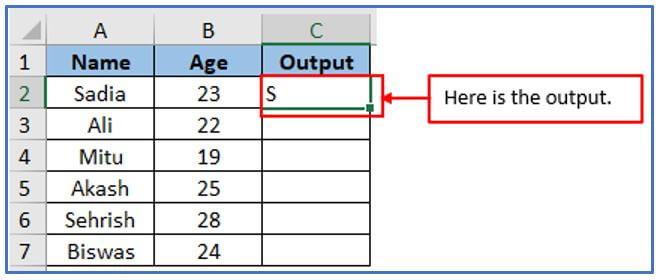
Step 5: Use the same formula from Step-3 or Drag-sown the cursor from C2.
Here are all the LEFT function results below.
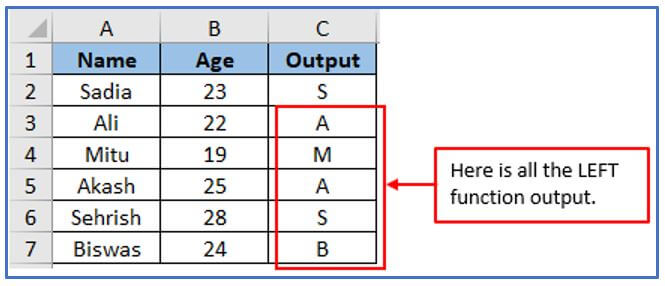
3. How to get a substring before a certain character?
Step 1: Take some names and enter the full names into your Excel as shown.
Data has been Placed here.
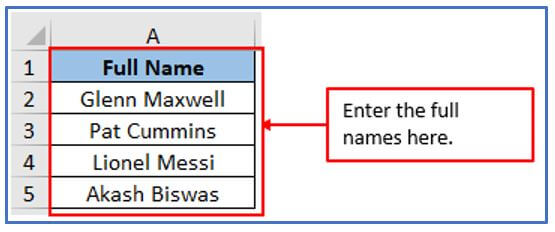
Step 2: Add the column from B1:B5 to get a substring before a certain character there.
A column has been Placed here.

Step 3: Enter the formula into your Excel as shown. To find out t a substring before a certain character, the formula will be: =LEFT(A2, SEARCH(” “, A2)-1)
Use the formula here.

Step 4: Now, Press enter and you will get the result.
The result of substring before a certain character shows.
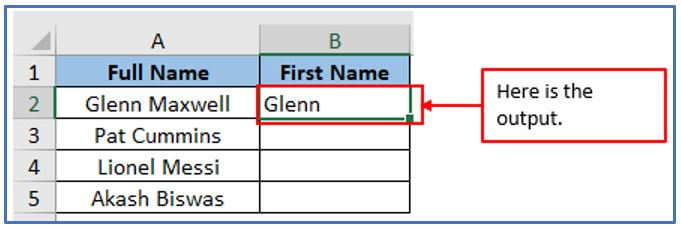
Step 5: Use the same formula from Step-3 or Drag-sown the cursor from C2.
Here are all the outputs below.

4. How to remove the last few characters from a string?
Step 1: Take some students’ ID as data and put them in the excel sheet.
Here all the data are seated in Excel.
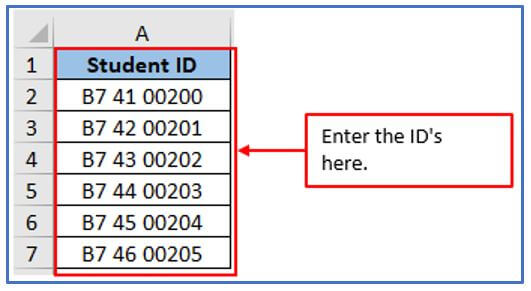
Step 2: Now, make another column from B1:B7 to get the result there.
A table has been prepared below.
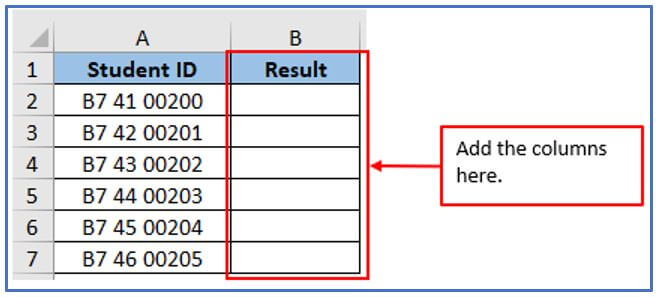
Step 3: Now, use the formula. The formula will be: LEFT(string, LEN(string) – number_of_chars_to_remove) or =LEFT(A2, LEN(A2)-6)
The formula has been placed according to its data.
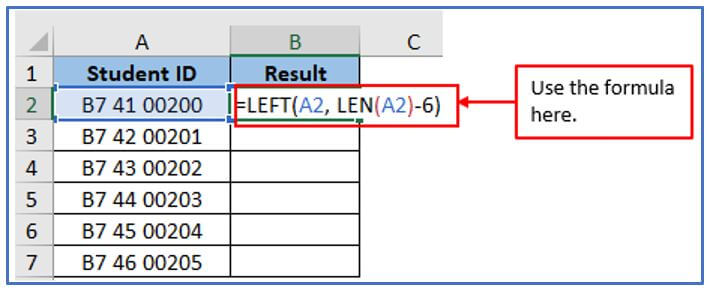
Step 4: Press the enter and get the value.
The output is shown below.
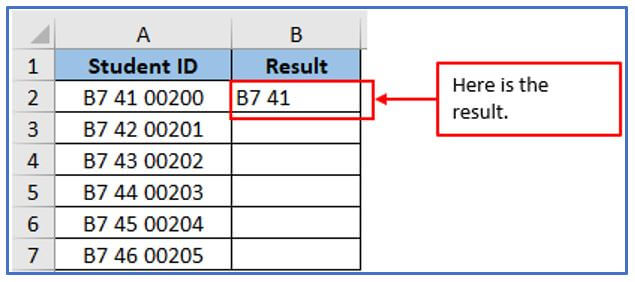
Step 5: Use the same formula for every number Or drop-down the cursor from B2 to B7.
Here is the result of every ID’s.
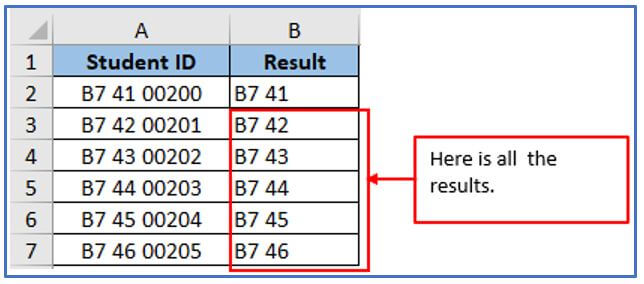
5. How to force the Excel LEFT function to return a number?
Step 1: Here is working with the above example data.
Placed all the information into the table.
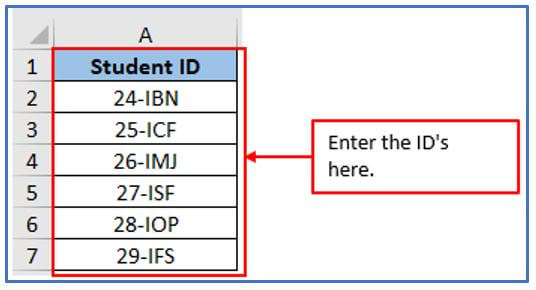
Step 2: Now add another column from B1:B7 to get the result there.
Add another column here.
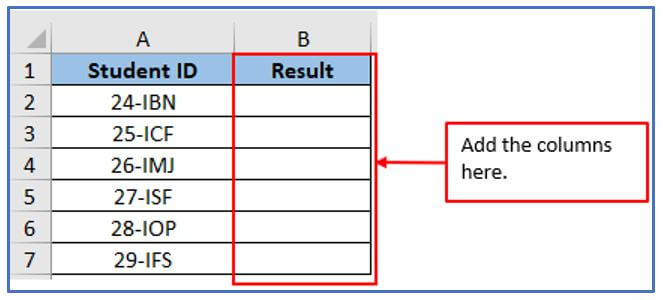
Step 3: Now, use the formula. The formula will be: =VALUE(LEFT(A2,2))
The formula has been placed according to its data.
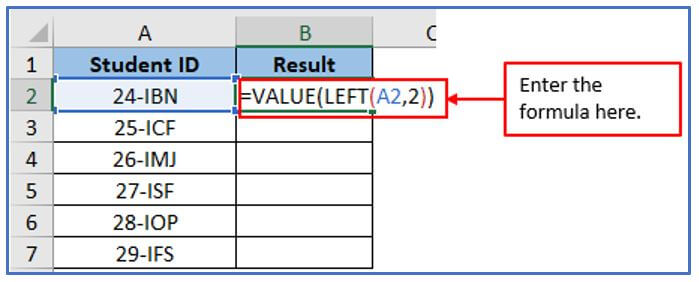
Step 4: Now, press the enter and get the result.
Here is the result below.
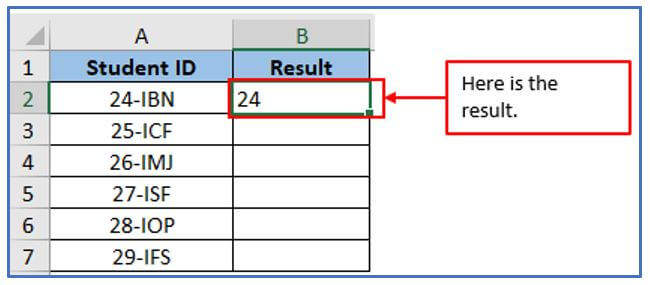
Step 5: To get the result of the rest of the ID’s use the formula or drag-down the cursor from B2 to B7.
All the ID numbers are here.
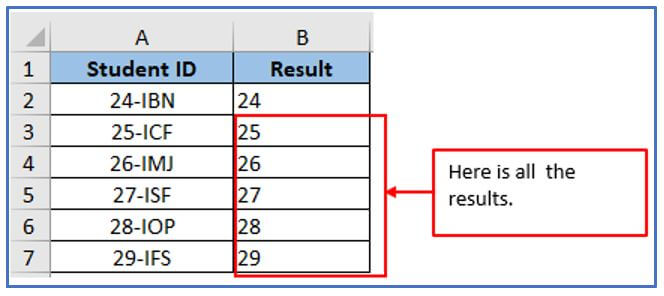
6. Excel LEFT function not working.
- Num_chars contention is less than zero
In the event that your Exceed expectations Cleared out equation returns the #Esteem! mistake, the primary thing for you to check is the esteem within the num_chars contention. If it’s a negative number, fair evacuate the short sign and the mistake will be gone (of course, it’s exceptionally impossible that somebody will put a negative number there of a reason. Most frequently, the Esteem mistake happens when the num_chars contention is spoken to by another work.
- Driving spaces within the original content
In case your Excel Left formula comes up short for no self-evident reason, check the initial values for driving spaces. In case you have replicated your information from the internet or sent it out from another outside source, numerous such spaces may hide unnoticed some time recently the content sections, and you’ll never know they are there until something goes off-base.
- Exceed expectations Cleared out does not work with dates
On the off chance that you endeavor to utilize the Exceed expectations Cleared out work to urge a person portion of a date (such as day, month or year), in most cases you may as it were recover the primary few digits of the number that speaks to that date. The point is that in Microsoft Exceed expectations, all dates are put away as integrability speaking to the number of days since January 1, 1900, which is put away as number 1 (for more data, if it’s not too much trouble see Exceed expectations date arrange). What you see in a cell is fair a visual representation of the date and its show can effortlessly be changed by applying a distinctive date organize.
Application of LEFT function in Excel
- Extract Initials: Use the LEFT function in Excel to extract the first letter or initials from names for formatting or identification.
- Trim Product Codes: Extract specific characters from product codes or serial numbers to categorize or filter items quickly.
- Date Formatting: Separate year, month, or day components from a full date string for custom date formatting or analysis.
- Isolate First Names: Pull out the first names from a full name entry, making it easier to sort or personalize data.
- Remove Unwanted Characters: Strip unwanted prefixes or characters from data, leaving only the necessary portion of a text string.
- Standardize Abbreviations: Extract the first few characters to create consistent abbreviations or codes across a dataset.
You may be interested:
